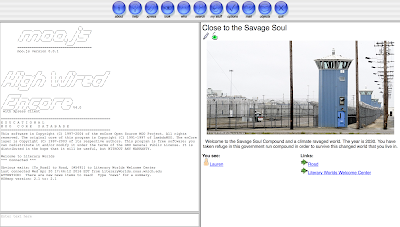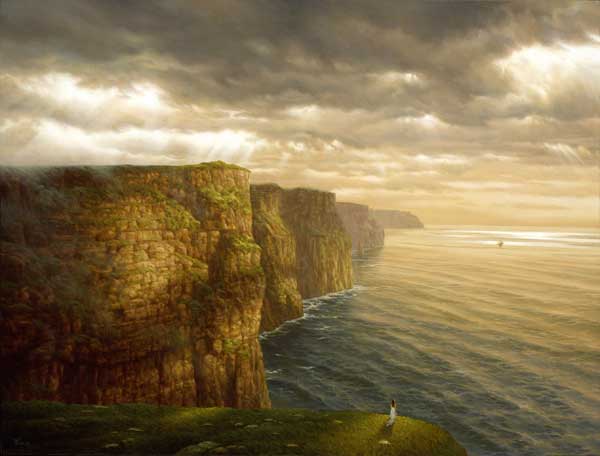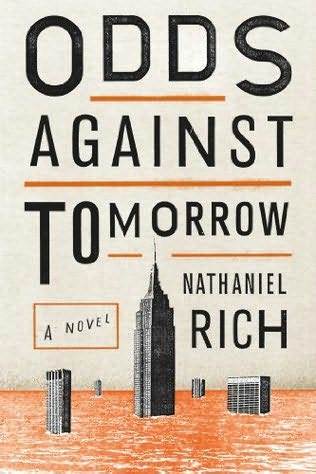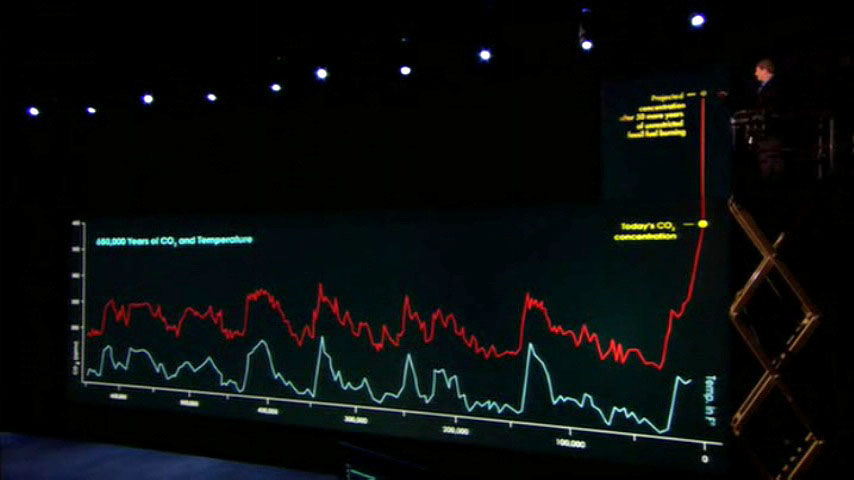 The UN Climate Change Conference 2015 marked a step forward in the global fight against climate change, however some believe that step wasn’t big enough and was taken too late. In this blog post I’ll outline the main aspects of the conference including the precursors leading up to it, the conference itself, and the successes and limitations of the conference.
The UN Climate Change Conference 2015 marked a step forward in the global fight against climate change, however some believe that step wasn’t big enough and was taken too late. In this blog post I’ll outline the main aspects of the conference including the precursors leading up to it, the conference itself, and the successes and limitations of the conference.
The Basics: In order to understand the what occurred at the 2015 UN Climate Change Conference and what has been done in the past regarding global action against climate change, there are a few relevant terms.
-UNFCCC-United Nations Framework Convention on Climate Change (1992): This is an international environmental treaty that set the background for dealing with climate change by outlining the framework for action aimed at stabilizing atmospheric concentrations of greenhouse gases.
-COP(21)-Conference of Parties: Annual meeting of the Parties that signed the UNFCCC to assess their global progress in dealing with climate change.
-CMP(11)-Parties to the Kyoto Protocol: Formal meeting of the Parties that signed the Kyoto Protocol— which extended the UNFCCC— to negotiate legally binding obligations of developed countries to reduce emissions of greenhouse gases.
Leading Up to 2015: There were a few major events that held an importance at the UN Climate Change Conference 2015 in the way that they provided insight as to what needed to be done and what ways were going to be most beneficial.
 -Kyoto Protocol (1997): This treaty committed Parties of UNFCCC by setting internationally binding emission targets based on the premise that global warming exists and man made CO2 caused it. The main problem with this treaty was that in 1997 the United States Senate voted to adopt a measure rejecting any international agreement that “would result in harm to the economy of the U.S, and thus the largest greenhouse gas emitted at the time withdrew from the treaty.
-Kyoto Protocol (1997): This treaty committed Parties of UNFCCC by setting internationally binding emission targets based on the premise that global warming exists and man made CO2 caused it. The main problem with this treaty was that in 1997 the United States Senate voted to adopt a measure rejecting any international agreement that “would result in harm to the economy of the U.S, and thus the largest greenhouse gas emitted at the time withdrew from the treaty.
-Copenhagen Conference (2009): This conference was supposed to mark a turning point in the climate change debate, and it did, but it was a turn in the wrong directing.This Conference ended without an form of legally binding treaty to reduce emissions as originally intended, instead it ended with a half-assed last minute deal that produced a weak outline of emission reductions with no specific targets or timetables.
 -U.S.- China Emission Agreement (2014): Really this wasn't an agreement, rather a joint a joint action announcement where the U.S. & China took responsibility for being the largest greenhouse gas emitters in the world (in 2011 they emitted roughly 1/2 of global greenhouse gas emissions annually) and a pledge from the United States to reduce it’s emissions 26-28% by 2025 and China to stop increasing emissions by 2030. The expected results of these pledges are shown on the graphs below with comparison to if the U.S. and China were to carry on business as usual.
-U.S.- China Emission Agreement (2014): Really this wasn't an agreement, rather a joint a joint action announcement where the U.S. & China took responsibility for being the largest greenhouse gas emitters in the world (in 2011 they emitted roughly 1/2 of global greenhouse gas emissions annually) and a pledge from the United States to reduce it’s emissions 26-28% by 2025 and China to stop increasing emissions by 2030. The expected results of these pledges are shown on the graphs below with comparison to if the U.S. and China were to carry on business as usual.
Pictured to the right are graphs based on an interactive graphic compiled by the New York Times representing what the annual emissions of greenhouse gases would be in relation to if the U.S. and China were to carry on with business as usual, or if they were to carry out their promises to reduce and stop reducing their emissions.
The Conference:
The United Nations Climate Change Conference was held from November 30th to December 12th 2015 in Paris, France. Overall 196 Parties attended and it included speakers, events, and a global agreement aimed at reducing emissions (and protests). Ultimately it resulted in the Paris agreement which was a step forward in addressing and dealing with the future of the Earth in relation to climate change.
Why it was Different From Kyoto and Copenhagen: This Conference did not end in the same way that the Conference preceding it did for three main reasons. The first of the reasons being that the top down approach (taken at Copenhagen 2009) where the main focus was to break down climate change with a blanket amount that all countries would have to reduce their emissions by which was not plausible or possible was scrapped. Instead the bottom up approach was chosen which focuses on essentially piecing together what needs to be done in any way possible. Each country was able to determine what they could contribute to the fight in dealing with climate change with their indicated nationally determined contributions. The next reason the the outcome of Paris 2015 was different than the other Conferences is that more so now than ever before global leaders are seeing the very real impacts that climate change is having on their countries and people and they are realizing that for the sake of their country it is in their best interest to act now. Additionally, China and the United States really set the path and led by example through their goals to limit greenhouse gas emissions in the U.S.-China Agreement.
Paris Agreement:
SUCCESSES
The Paris Agreement was the first Universal agreement in the history of climate negotiation that is linked with goals & mechanisms to achieve them including mitigation, a transparency system and global stock-take, adaptation, loss and damage, and support. It declares an ambition to hold global average temperature rise to 1.5ºCelsius or 2.7º Fahrenheit above pre-industrial levels while working to increase the ability to adapt to the adverse impacts of climate change and foster climate resilience and low greenhouse gas emissions development. Additionally it directs finances towards low greenhouse gas emissions and climate-resilient development focuses on Intended Nationally Determined Contributions (INDCs) which are what each country believe that they stand to cut their emissions by.
“COP21 was a success, but that was the easy part”-Christina Figueres, Executive Secretary United Nations Framework Convention on Climate Change
DOWNFALLS
Many environmentalist and climate change advocates were unhappy with the agreement that was made. The Paris agreement was not a treaty, rather it is just an agreement. Only some aspects are legally binding including estimated reduction totals & review, the financial aid and actual reduction of emissions are not. Based on current projections the goals that were made do not come close to cutting emission levels enough to the “safe level”. The general complaint of the environmental activists is the pledges made by the parties taking part in this agreement is are considered weak and on the medium to low side of taking action. The goal countries agreed to in 2010 at the UN Climate Change Conference in Cancun, Mexico was to limit the temperature increase to 3.6ºF. The goals made at the 2015 Conference will cause the temperature to increase by 6ºF, which is off even from their goal to limit the temperature rise to 1.5ºC or 3.6ºF.

To the right is a graph provided by Climate Action Tracker that show what the outcomes of the goals in the Paris Agreement will look like in relation to if countries choose not to act at all and to what the goal reached at the 2010 Climate Change Conference were.

Implications of Paris Agreement: I did some math based on these projected outcomes, as we are used to hearing that safe 350ppm level of CO2 in the atmosphere and the yearly emission totals that I found were measured in gigatons. Based on information I obtained from the Carbon Dioxide Information Analysis Center I converted gigatons to a rough parts per million estimate.
1 part/million= 7.81 gigaton
BUSINESS AS USUAL
140gig x 1ppm= +17.9ppm (per year)
7.81gig
PLEDGES
85gig x 1ppm = +2.86ppm (per year)
7.81gig
Using these conversions I took the relatively "safe" level of CO2 at 350 ppm, and found that the rough current concentration is 400 ppm. From there I figured out what the concentration of CO2 in the atmosphere will be in 2100 if we were to take no action, and if we were to follow through with the goals made at the UN Climate Change Conference by multiplying the estimated part per million emissions with 85 (the number of years until 2100) and added that to the estimated CO2 parts per million concentration of 2015. The results were scary.... Based on the effects of climate change that we are feeling at just 50 ppm over what is considered safe, I cannot begin to imagine the world we will live on (if we are able to) with 13-15x this amount.
-Safe level: 350 ppm
-2009 level: 390 ppm
-2016 level: 400 ppm
-2100 level: Without action: +750 ppm With action: +640 ppm
Conclusion: Just with these rough estimates of CO2 concentration, I personally don't feel as though the United Nations Climate Change Conference can be considered a success in addressing climate change. I do not feel as though enough was done to address the true reality of the problem that we are facing currently. I agree with many critics that while we did act, the act was weak and small in comparison of what is necessary, especially because it ended in an agreement rather than a legally binding treaty. While this Conference was more successful than those in the past (Copenhagen) I feel as though there is a lot more work to be done in regards to dealing with climate change. I do however feel as though it was a step in the right direction.
"The irony is, an agreement like [The Paris Agreement] adopted at the first climate conference in 1995 might have worked. Even then it wouldn’t have completely stopped global warming, but it would have given us a chance of meeting the 1.5 degree Celsius target that the world notionally agreed on.”
-Bill Mckibben, Author of Eaarth: Making Life on a Tough New Planet
If you want more information regarding the 2015 United Nations Climate Change Conference, and thinks related, be sure to check out these links.
Climate Action Tracker--http://climateactiontracker.org
Sources:
Chappell, B. (2015, December 12). Nearly 200 Nations Adopt Climate Agreement At COP21 Talks In Paris. Retrieved January 24, 2016, from http://www.npr.org/sections/thetwo-way/2015/12/12/459464621/final-draft-of-world-climate-agreement-goes-to-a-vote-in-paris-saturday
Climate Action. (2015). Find out more about COP21. Retrieved January 23, 2016, from http://www.cop21paris.org/about/cop21/
Edberg, S. (2015, December 09). COP21: Inaction or momentum for change? Retrieved January 22, 2016, from https://www.climateinteractive.org/blog/cop21-inaction-or-momentum-for-change/
United State Environmental Protection Agency. (2014). Global Greenhouse Gas Emissions Data. Retrieved January 24, 2016, from http://www3.epa.gov/climatechange/ghgemissions/global.html
 For my climate change video games unit, I created a sort of virtual world on a website called Literary Worlds. I would not necessarily consider it a virtual world, rather it it more of an online semi-interactive storybook. Let me start out this post by saying that this is no small project. I worked on this for the "Climate Change Video Games" and "Climate Change and Writing" unit and I am still not finished with it. It is most definitely an on-going project.
For my climate change video games unit, I created a sort of virtual world on a website called Literary Worlds. I would not necessarily consider it a virtual world, rather it it more of an online semi-interactive storybook. Let me start out this post by saying that this is no small project. I worked on this for the "Climate Change Video Games" and "Climate Change and Writing" unit and I am still not finished with it. It is most definitely an on-going project. Overall, I have enjoyed this project/video game/writing/whatever you want to call it. I have not been able to put the time and effort into it that I would like, but as I mentioned before, this is a project that I can continue to improve as new idea and inspiration comes to me. I look forward to being able to grow my world and create more possible and very real impacts of climate change that we may face in the very near future. I do feel that this program is a little outdated and definitely not very user friendly. I like to consider myself a pretty tech savvy person, and without the introduction to this website that my professor gave me, I do not believe that I would have been able to figure out how to operate it.
Overall, I have enjoyed this project/video game/writing/whatever you want to call it. I have not been able to put the time and effort into it that I would like, but as I mentioned before, this is a project that I can continue to improve as new idea and inspiration comes to me. I look forward to being able to grow my world and create more possible and very real impacts of climate change that we may face in the very near future. I do feel that this program is a little outdated and definitely not very user friendly. I like to consider myself a pretty tech savvy person, and without the introduction to this website that my professor gave me, I do not believe that I would have been able to figure out how to operate it.



























